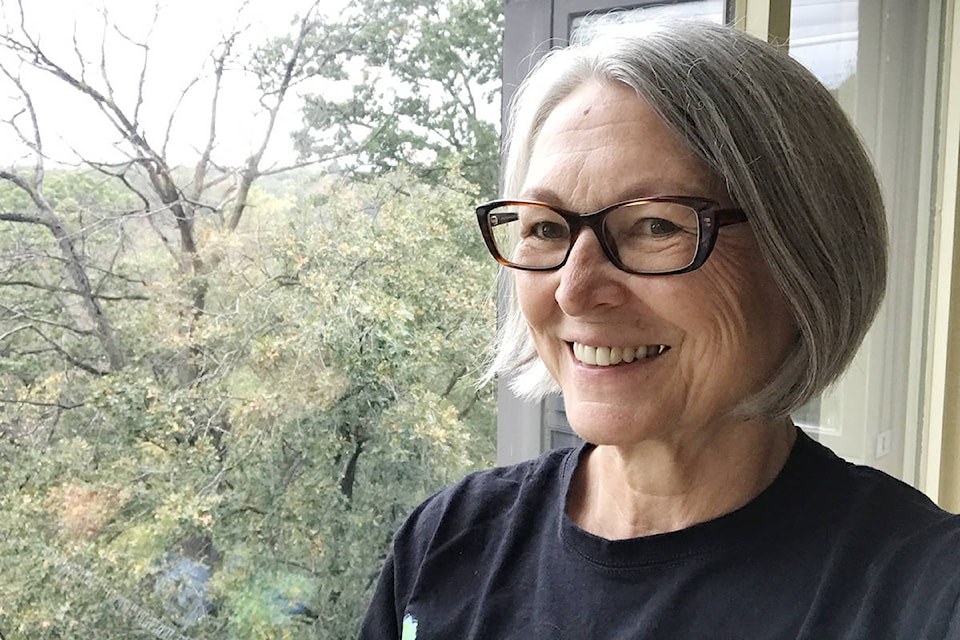While completing her undergraduate degree and even before that, Celia Haig-Brown said she would never be a teacher.
At the moment, 70-year-old Haig-Brown, one of Roderick Haig-Brown’s daughters, is the associate vice president of research at York University as well as a professor in the faculty of education.
“I said ‘I don’t know really what I want to do with life but there is one thing for sure, I never want to be a teacher’,” she remembered with a laugh.
That all changed when, after being unlucky in love in Montana, she went “traipsing” through Mexico with a friend and got a letter from her father.
“He said ‘I think it is time you really started thinking about what you are going to do next. And I have your phone bill here that needs to be paid, so maybe you need to get a job,’” Haig-Brown recalled.
So she went home for Christmas and ended up moving to Williams Lake with her brother, where she got a job as a teacher’s assistant.
Though she was only preparing and marking labs and grading papers, she was involved with what was going on in the school and the students’ energy excited her.
From there she went back to university to become a teacher.
“The opportunities for doing so many different things, the energies of those kids, it just completely grabbed my attention,” she said.
When she completed her teaching degree she taught in Kamloops. From there she became a teacher educator at UBC before returning to university to complete a Master of Arts in Curriculum and Instruction and a PhD in the Social Foundations of Educational Policy.
Now she works with passionate researchers who are asking questions about everything from neutrinos to the social impact of refugees.
“It’s quite fabulous, I get to work with researchers from all over the university, people from earth and space science to the Robarts Centre for Canadian Studies to the associate deans research from all the faculties,” she said.
On top of ensuring others can get their research done, Haig-Brown has her own doctoral students and she does her own research. Right now she is in the midst of completing the rough cut of a documentary film on the Naskapi Nation in northern Quebec.
“Life is full and fun,” she said.
And she believes she has the surroundings she grew up in as well as the teachings of her family to thank for that.
“The most important aspects of growing up were growing up beside that river and growing up with parents who taught me about interrelationships and how important our relations with the natural world are,” she said.
In Roderick’s second book called Pool and Rapid, he personifies the river, Celia said.
“If you poison that living being and if you live in relationship to that poison, you are going to poison yourself eventually,” she said. “It’s those kinds of connections that came from living on the banks of that river, from sitting on the bank of that river when my father was fishing, looking at all of the intricate little creatures that were moving around and the grasses blowing—the grasses under the water it was like they were blowing, they were waving in the water—looking at how they were interrelated and connected with each other. That kind of gave me the basis of who I became.”
But it wasn’t just the natural world that she was connected with.
“In addition to living in relation to the river, we all live in relation to Indigenous nations that were here first,” she said.
Growing up, the knowledge that she was living on indigenous land was an integral part of her understanding of who she was as a person and as a citizen, she added. And she believes that is part of what has enabled her to do successful research with a number of different indigenous peoples and contexts.
Haig-Brown also believes that she comes by the art of storytelling, and teaching, naturally.
“I sat as a child and watched my father write, I ran around as a child and watched my father write and of course, our lives were surrounded by books,” she said.
A number of her relatives, and siblings dabbled in writing, and even more of them were educators, including her mother, who worked in the Campbell River High School’s library.
The thing that keeps her going at 70-years-old? She said that her saving grace is that she “remains curious about everything that moves.”
If she has any advice to give it is three-fold, and the first is to be curious and the second is to be open.
“Be curious, never let your curiosity leave you,” she said. “Be curious about everything, about how things work, about what you see in front of you, about colours, about sounds, about everything. Be curious and be open to possibility. I know that is an easy thing to say and not necessarily an easy thing to do, especially if you have encountered obstacles and difficulties, but it really is the only way to approach this world, which is in flux and changing constantly.”
And last, but not least, is to listen, Haig-Brown said, because being able to listen to other people can take you in directions you never anticipated.
In other news:
